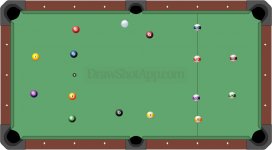FOCUSED is the answer..
Interesting this thread came up as I was about to post a very similar one. As a league player for the most part, as I assume most are, I find that FOCUSED practice for an hour or two at a time works best. Play 8-ball against yourself and then run the remainder in rotation. Great drill if you have limited practice time. I'm told I play extremely slow, I don't agree but maybe you can tell me....
http://www.ustream.tv/channel/playingtheghost
Interesting this thread came up as I was about to post a very similar one. As a league player for the most part, as I assume most are, I find that FOCUSED practice for an hour or two at a time works best. Play 8-ball against yourself and then run the remainder in rotation. Great drill if you have limited practice time. I'm told I play extremely slow, I don't agree but maybe you can tell me....
http://www.ustream.tv/channel/playingtheghost
